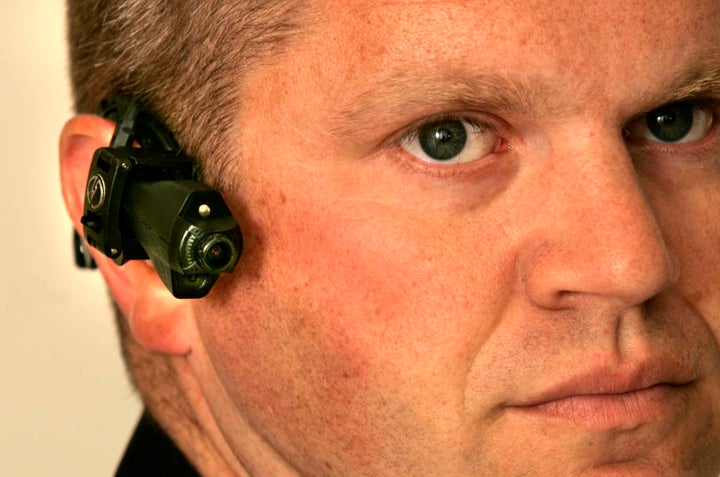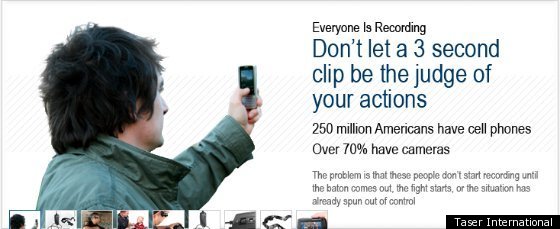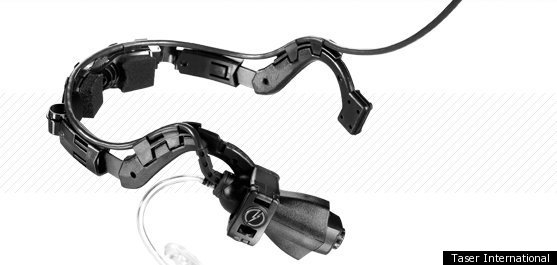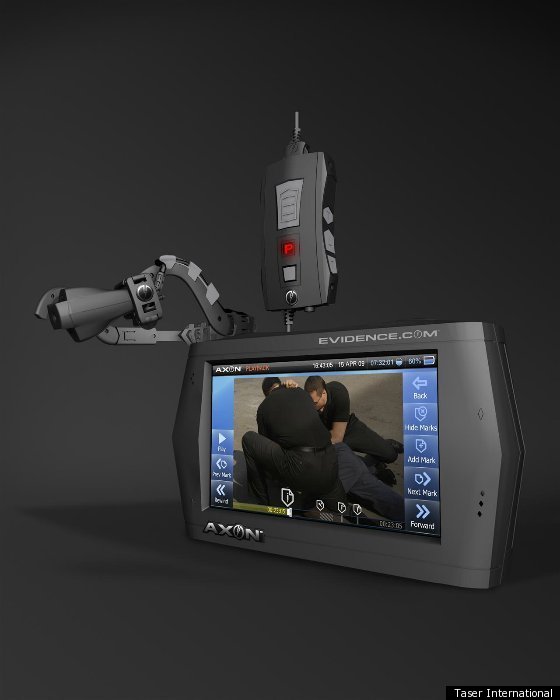
"When you have 60,000 Tasers out there with cops," Rick Smith, the CEO of electroshock gun manufacturer TASER International said plainly, "Some of them are going to do unbrilliant things."
"Unbrilliant" is also the way Smith describes the mounting number of smartphone-shot YouTube videos that show police officers using his company's Tasers -- well -- unbrilliantly. Cases in point: the infamous "Don't tase me, bro" incident at a John Kerry speech in 2007; the 2006 incident during which Mostafa Tabatabainejad was tased outside the UCLA library for alleged failure to produce his student ID and non-compliance with campus cops; and, most recently, a YouTube video on the Reddit front page titled "Cop tasers then kicks mentally handicapped person while he is complying." (One Redditor casually called the Taser a "torture device," which are not the words that a company whose slogan is "Protect Life" wants associated with its brand.)
Rick Smith and TASER International, however, believe they have invented a product that will both make cops act better and improve relationships between police officers and citizens nationwide. It is the newly updated AXON on-officer point-of-view camera, which was first released in 2008 and which the company will refresh this October with high-definition and full-color picture. It records everything that the officer sees and does in real-time, from the officer's point-of-view, streaming it live on a miniature screen that the officer carries. The recordings are simultaneously saved to a central database.
Why do police officers need it? Well, for one reason, the main image on the AXON's homepage speaks for itself:

Aside from limiting the damage of those viral videos, Smith thinks that his AXON system could serve a higher purpose: saving police departments and taxpayers millions of dollars on police mistreatment and brutality cases that would no longer have to be investigated.
1. Camera. 2. 'Event Button' 3. HD Screen
First, the technology. In order to be effective, the camera has to be light and unobtrusive, both of which I found it to be when I tried it out at The Huffington Post's New York City headquarters. The AXON is a mini-cam that sits on a small half-circular head-brace just over the officer's ear and points straight out, following the officer's eyeline. Anything the officer sees, the AXON sees; when the officer turns his head, the camera turns, too.
The camera is connected to a high definition video screen and hard drive that clips to the officer's belt. The AXON does not start recording audio or video, however, until the officer tells it to; in order to do this, he or she pushes an "Event" button on the communication hub, which rests below the shoulder or in the officer's breast pocket. (The camera is not always recording due to privacy concerns from police officer unions: There's no real reason to tape officers using the restroom, for example). Once an officer hits the "Event" button on the communications hub, the AXON starts its recording 30 seconds prior to that moment. This is especially useful for incidents that begin and escalate very suddenly, so that the video footage includes what led to the incitement of the event.
Here are some pictures of the AXON system. First, the monitor, which is about the size of your everyday in-car GPS system and clips comfortably onto an officer's belt or can slide into a front pants pocket:

And here is the headset, worn behind the head and over the ears. The camera is pointing toward the bottom right of the photo:

Here's a rendering of the entire three-part system (camera, screen and "Event" button):

And finally, here's a video that shows exactly how these parts look on an officer:
Together, all of these pieces should mean no more reliance on dashboard cameras (those stationary units that shoot outward from the squad car's dashboard, familiar to anyone who has seen "Cops"), and also less reliance on hearsay, questionable witness testimony or lengthy and expensive evidence collection. Smith argues that a high-definition color recording of the event from the cop's POV could save police departments and local governments millions of dollars and man hours per year, given the rising costs of investigating police mistreatment and the cost of having to suspend officers with pay while these investigations go on.
"Don't They Trust Me?"
Smith said the civilians he has spoken to are largely in favor of always-on POV cameras for cops, but officers generally need a bit more convincing.
"The first reaction is skepticism, because officers are concerned of Big Brother," Smith explained. "It's like, why are they recording me? Don't they trust me?"
At first thought, as an employee, I would be a bit ticked off if my boss wanted to record everything I did during the day. But Smith dismisses that anger by pointing out that the AXON camera only records video when the officer pushes the "Event" button. Moreover, he says, the system is meant to protect cops.
"Once an officer has a confrontation with a member of the public that threatens to slander them or levy false charges, they come around," he explains. "It's body armor for the courtroom."
As Smith describes it, the product will not just boost TASER as a manufacturer; it will also aid police departments looking to bolster their reputations in their community, or to reassure citizens that the actions of some "unbrilliant" cops won't go unpunished due to a lack of credible evidence.
AXON, AXOFF?
Though the hardware is surprisingly lightweight and that the Linux OS is clean and easy to operate, I can see two problems for TASER's potentially transformative AXON system going forward.
There is, first, the problem of ego. Again, I can only imagine how I would react if I was told that my every move would be captured on video camera, due to the fact that other writers were suspected of plagiarism. I've never plagiarized, so why should I be put under such close watch? That a high-tech nanny-cam would protect me, as well as other writers and all readers out there, would not make up for the fact that my boss apparently did not trust me. On the other hand, many Americans, especially those in the more hive-minded corners of the Internet, believe that cops do not always act with society's best interest at heart. Equipping more police officers with technology like this could potentially go a long way toward improving the perception of officer liability.
The second deterrent, of course, is cost. For cash-strapped local governments and police departments, the AXON system and storage might come at too high of a price to justify. The actual hardware (camera, communication hub, HD screen) costs about $1700 per unit; the fees for streaming and storage at the TASER-run Evidence.com have yet to be set. Smith laid out in an email how the pricing will shift up and down depending on the services that a department requires, with graduated costs for licensing and servicing, data storage and database maintenance and support. He did not offer any concrete numbers, though he did say that the AXON system would prove more cost-effective than a dashboard video camera within 3 years of purchase.
The AXON probably does not signal the end of those outrageous YouTube videos in which flailing, innocent citizens scream about their First Amendment rights. But I believe Smith when he says that, in early-adopting precincts where all the cops wore AXONs, both the officers and the citizens behaved more civilly toward each other.
"There have been 0 complaints against officers with head cameras," Smith told me. "There were a couple of people who called and said, 'This guy was rude to me,' but when they were asked to come down to the station to watch the video, they backed away."
If the price is right, the AXON could just undo years of unbrilliance.